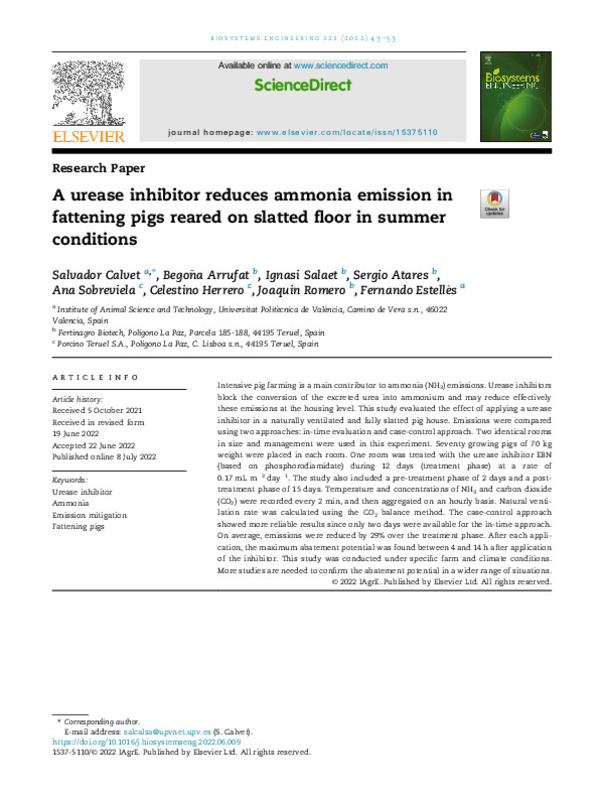JavaScript is disabled for your browser. Some features of this site may not work without it.
Buscar en RiuNet
Listar
Mi cuenta
Estadísticas
Ayuda RiuNet
Admin. UPV
A urease inhibitor reduces ammonia emission in fattening pigs reared on slatted floor in summer conditions
Mostrar el registro completo del ítem
Calvet, S.; Arrufat, B.; Salaet, I.; Atares, S.; Sobreviela, A.; Herrero, C.; Romero, J.... (2022). A urease inhibitor reduces ammonia emission in fattening pigs reared on slatted floor in summer conditions. Biosystems Engineering. 221:43-53. https://doi.org/10.1016/j.biosystemseng.2022.06.009
Por favor, use este identificador para citar o enlazar este ítem: http://hdl.handle.net/10251/197782
Ficheros en el ítem
Metadatos del ítem
| Título: | A urease inhibitor reduces ammonia emission in fattening pigs reared on slatted floor in summer conditions | |
| Autor: | Arrufat, Begoña Salaet, Ignasi Atares, Sergio Sobreviela, Ana Herrero, Celestino Romero, Joaquin | |
| Entidad UPV: |
|
|
| Fecha difusión: |
|
|
| Resumen: |
[EN]
A urease inhibitor was tested in a naturally ventilated pig farm in summer conditions.
In-time evaluation and case-control approach were used to assess the mitigation potential.
Urease inhibitor reduced ammonia ...[+]
|
|
| Palabras clave: |
|
|
| Derechos de uso: | Reserva de todos los derechos | |
| Fuente: |
|
|
| DOI: |
|
|
| Editorial: |
|
|
| Versión del editor: | https://doi.org/10.1016/j.biosystemseng.2022.06.009 | |
| Agradecimientos: |
|
|
| Tipo: |
|









